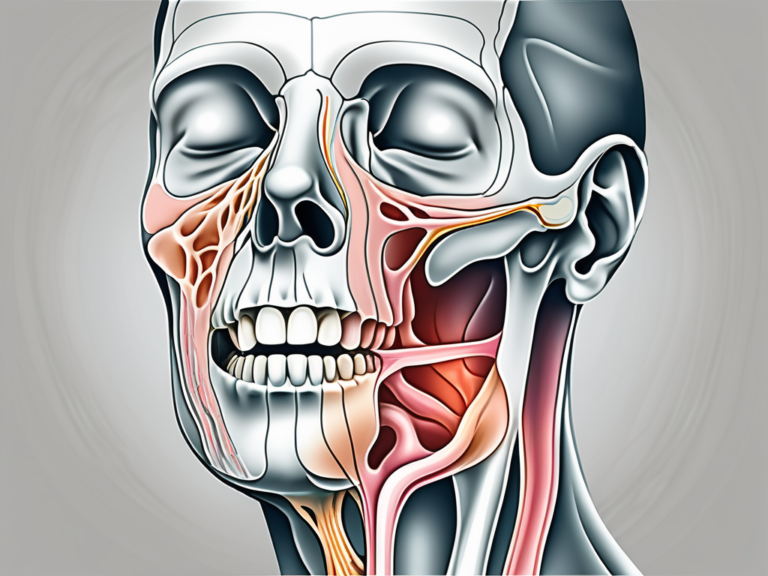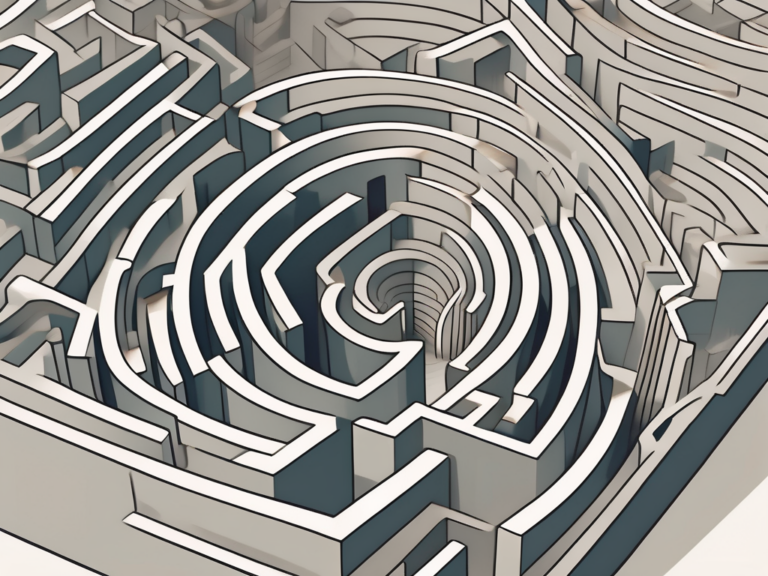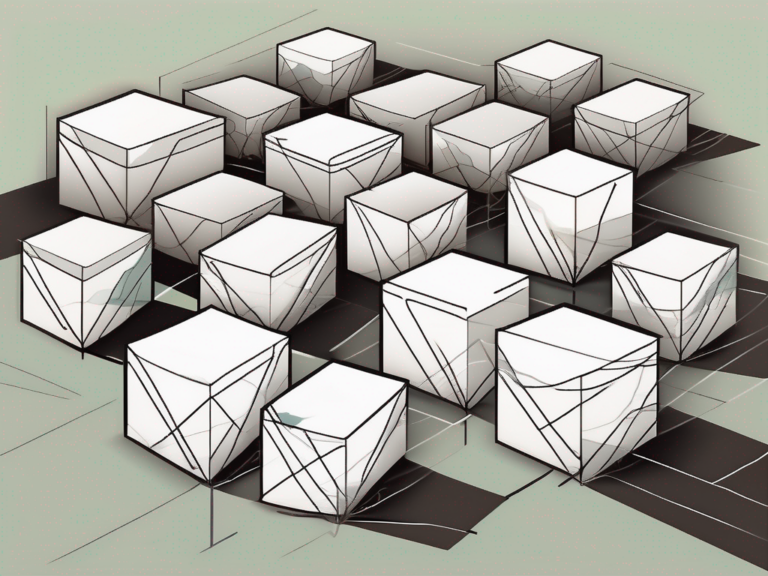The Role of the Trochlear Nerve in Eye Movement
The trochlear nerve plays a crucial role in eye movement, serving as a vital link between the brain and the muscles responsible for controlling eye position and orientation. In this article, we will delve into the intricate workings and significance of the trochlear nerve, exploring its anatomy, function, and its impact on vision. We will also discuss the disorders associated with the trochlear nerve, recent advancements in trochlear nerve research, as well as future directions in this field of study.
Understanding the Trochlear Nerve
The trochlear nerve, also known as the fourth cranial nerve or CN IV, is one of the twelve cranial nerves that emerge directly from the brain. It originates from a specialized group of cells, known as trochlear nucleus, located in the midbrain. With its unique anatomical trajectory, the trochlear nerve plays a crucial role in precise eye movements, specifically controlling the superior oblique muscle of the eye.
The trochlear nerve is the thinnest cranial nerve in the human body and is particularly vulnerable to damage due to its long intracranial course. In cases of trauma or certain medical conditions, such as increased intracranial pressure, the trochlear nerve can be compressed or injured, leading to symptoms like double vision (diplopia) and difficulty focusing on near objects.
Anatomy of the Trochlear Nerve
The trochlear nerve emerges dorsally from the brainstem, opposite to the other cranial nerves, arising near the midline. It then crosses through a distinctive structure called the superior medullary velum before making its way to the cavernous sinus. From there, it loops around the lateral aspect of the cavernous sinus and eventually enters the orbit, where it innervates the superior oblique muscle.
Interestingly, the trochlear nerve has the longest intracranial course of all the cranial nerves, traveling a significant distance within the skull before reaching its target muscle in the eye. This lengthy pathway makes the trochlear nerve particularly susceptible to damage from head injuries or certain vascular conditions that affect blood flow to the brain.
Function of the Trochlear Nerve
The primary function of the trochlear nerve is to innervate the superior oblique muscle, which is responsible for a crucial aspect of eye movement, torsion. Torsion refers to the rotation of the eye around its visual axis, allowing us to maintain a stable visual field during movement. By controlling the superior oblique muscle, the trochlear nerve enables precise vertical and rotational eye movements, contributing to our ability to navigate the visual world.
In addition to its role in eye movement, the trochlear nerve also plays a part in proprioception, which is the body’s ability to sense the position and movement of muscles and joints. The nerve carries sensory information from the superior oblique muscle back to the brain, helping to coordinate eye movements with spatial awareness and balance. This dual function highlights the intricate nature of the trochlear nerve and its importance in maintaining optimal visual and motor function.
The Trochlear Nerve and Eye Movement
Eye movement involves a complex interplay between various cranial nerves and muscles, with the trochlear nerve occupying a unique position in this intricate network. Understanding the mechanism of eye movement and the trochlear nerve’s role in facilitating smooth visual tracking is essential in comprehending the full extent of its significance.
The trochlear nerve, also known as the fourth cranial nerve or CN IV, is one of the twelve cranial nerves that emerge directly from the brain. It is the thinnest and longest intracranial nerve, with a unique dorsal exit from the brainstem. This nerve has the arduous task of supplying the superior oblique muscle of the eye, which is responsible for intorsion, depression, and abduction of the eyeball.
Mechanism of Eye Movement
Eye movement is a multifaceted process, coordinated by several ocular and extraocular muscles powered by the impulses from cranial nerves. The superior oblique muscle, innervated by the trochlear nerve, plays a critical role in this mechanism. When the superior oblique muscle contracts, it causes the eye to rotate inwards and downwards, allowing for precise control of eye position both vertically and torsionally.
Eye movement is not only crucial for visual tracking but also for maintaining binocular vision and depth perception. The intricate interplay between the trochlear nerve, other cranial nerves, and ocular muscles ensures that our eyes can smoothly follow objects, adjust focus, and perceive depth accurately.
Trochlear Nerve’s Contribution to Eye Movement
The trochlear nerve’s unique trajectory and innervation of the superior oblique muscle allow it to mediate specific eye movements that other cranial nerves cannot entirely replicate. Its role in controlling torsional eye movements enables individuals to make fine adjustments to their visual field, compensating for changes in head position and maintaining a stable and focused view.
Moreover, the trochlear nerve’s function extends beyond simple eye movements; it also contributes to the vestibulo-ocular reflex, which helps stabilize the eyes during head movements. This reflex ensures that our gaze remains fixed on a target even when our head is in motion, enhancing our ability to visually track moving objects and maintain clear vision in dynamic environments.
Disorders Related to the Trochlear Nerve
Disorders affecting the trochlear nerve, also known as the fourth cranial nerve, can have a significant impact on eye movement and vision. This nerve is responsible for controlling the superior oblique muscle, which helps in the downward and inward movement of the eye. Understanding the symptoms, diagnosis, and treatment options associated with these disorders is crucial in effectively managing and mitigating their effects.
Damage or dysfunction of the trochlear nerve can result from various causes, such as head trauma, vascular issues, infections, or even congenital abnormalities. The presentation of symptoms can vary depending on the extent and location of the nerve damage.
Symptoms of Trochlear Nerve Disorders
When the trochlear nerve becomes affected, it can lead to several distinct symptoms that can significantly impact an individual’s quality of life. These may include double vision, particularly when looking downward or inwards, as well as difficulty in rotating the eye downwards or torsionally. Additionally, individuals may experience eye misalignment, headaches, and difficulty in maintaining a stable visual field.
Furthermore, trochlear nerve disorders can also manifest as eye fatigue, especially during tasks that require sustained downward gaze, such as reading or using electronic devices. This fatigue can further exacerbate the visual symptoms and affect daily activities.
Diagnosis and Treatment of Trochlear Nerve Disorders
Diagnosing trochlear nerve disorders typically involves a comprehensive examination by a neuro-ophthalmologist or a neurologist specializing in eye disorders. This evaluation includes assessing eye movements, coordination, and alignment, as well as conducting specific tests to isolate the involvement of the trochlear nerve. Neurological assessments, imaging studies like MRI or CT scans, and electromyography may aid in confirming the diagnosis.
Treatment options for trochlear nerve disorders aim to address the underlying cause and alleviate the associated symptoms. Depending on the severity and nature of the condition, interventions may range from prescribing corrective lenses or prisms to surgical procedures aimed at repositioning the affected eye muscles. Early detection and appropriate management play a crucial role in optimizing visual outcomes and preventing long-term complications.
The Impact of Trochlear Nerve Damage on Vision
Trochlear nerve damage can have both short-term and long-term effects on vision. Understanding these effects is essential in comprehending the impact trochlear nerve disorders can have on an individual’s visual experience.
It is important to note that the trochlear nerve, also known as the fourth cranial nerve, plays a crucial role in controlling the superior oblique muscle of the eye. This muscle is responsible for various eye movements, particularly those involved in looking downward and inward. Damage to the trochlear nerve can disrupt the smooth coordination of these movements, leading to a range of visual disturbances.
Short-Term Effects of Trochlear Nerve Damage
Immediately following trochlear nerve damage, individuals may experience a significant disruption in eye movement. This can lead to difficulty in maintaining focus, poor depth perception, and a marked reduction in the ability to stabilize the visual field during head movements. These short-term effects can significantly impair daily activities and tasks that require precise visual coordination.
Furthermore, short-term effects may also include double vision (diplopia), especially when looking downward or inward. This occurs due to the imbalance in the actions of the extraocular muscles, resulting in the brain receiving conflicting visual information from each eye.
Long-Term Effects of Trochlear Nerve Damage
In the long term, individuals with trochlear nerve damage may adapt to their condition and develop compensatory strategies to mitigate the effects on vision. However, depending on the severity and extent of the damage, long-term effects may persist, affecting overall visual function and quality of life.
Moreover, long-term effects can also manifest as challenges in activities that require sustained or repetitive eye movements, such as reading or using digital screens. The constant effort to overcome the limitations imposed by trochlear nerve damage can lead to eye strain, fatigue, and decreased visual acuity over time.
Advances in Trochlear Nerve Research
Ongoing research into the workings of the trochlear nerve continues to shed light on its intricate function and potential therapeutic avenues for individuals affected by trochlear nerve disorders.
Current Research on the Trochlear Nerve
Scientists are actively studying the underlying mechanisms of trochlear nerve development, regeneration, and repair. By gaining a deeper understanding of the cellular and molecular processes involved in trochlear nerve function, researchers aim to uncover new ways to prevent and treat trochlear nerve disorders in the future.
One area of current research focuses on the role of trochlear nerve in eye movement coordination. Studies have revealed that the trochlear nerve plays a crucial role in ensuring precise and synchronized eye movements, allowing us to smoothly track objects and shift our gaze. By investigating the neural circuits and signaling pathways involved in trochlear nerve function, scientists hope to develop targeted therapies that can restore normal eye movement patterns in individuals with trochlear nerve disorders.
Future Directions in Trochlear Nerve Research
Future research endeavors hold promise for further unraveling the complexities of the trochlear nerve and its impact on eye movement. Areas of interest include exploring potential therapeutic targets and developing innovative treatment modalities aimed at restoring or improving trochlear nerve function and optimizing visual outcomes for individuals affected by trochlear nerve disorders.
Another exciting avenue of future research involves investigating the role of trochlear nerve in other sensory functions beyond eye movement. Recent studies have suggested that the trochlear nerve may also play a role in proprioception, which is our ability to sense the position and movement of our body parts. Understanding the broader functions of the trochlear nerve could potentially lead to new insights into neurological disorders that involve both eye movement and proprioceptive impairments.
As the field of trochlear nerve research continues to advance, scientists are also exploring the potential of regenerative medicine approaches. By harnessing the power of stem cells and tissue engineering, researchers aim to develop novel strategies for repairing damaged or injured trochlear nerves, offering new hope for individuals with trochlear nerve disorders.
In conclusion, the trochlear nerve is a vital component in eye movement and visual coordination. Understanding its anatomy, function, and the ramifications of trochlear nerve disorders allows us to appreciate its critical role in maintaining optimal vision. Ongoing advancements in trochlear nerve research offer hope for further improving our understanding and management of trochlear nerve-related conditions, ultimately enhancing the lives of individuals affected by these disorders.






